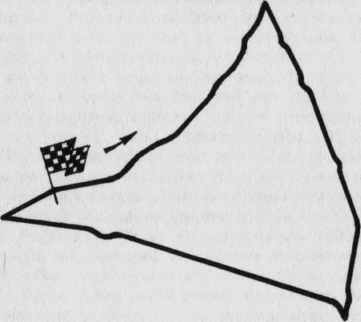LE MANS (FRANCE) – year 1906

The course of the first ACF Grand Prix races was drawn around the circumference of a circle of length 104 km near the city of Le Mans. There were good quality imperial roads here, enabling the construction of a track of the required length without great costs. The track was named Sarthe – the name was borrowed from the local automobile club and the river, flowing through the city. It had the shape of a triangle with three straight sections and three sharp turns. The total length of the route for two-day races, consisting of driving six laps each day, was 1248 km. In order to avoid dust, the surface was covered with a new invention - an asphalt-based resin mixture. However, during the races it turned out, it wasn't a good idea – the sun melted the asphalt, whose red-hot particles swirled in the air, making it impossible for cars in the rear to drive. Because there were no security measures when crossing the villages, residents of St.. Calais had built a curved wooden road around the village at a dangerous bend. There was a grand stand at the starting point. In the breaks between subsequent races, the cars were parked in a well-guarded parking lot, lit at night with powerful headlights. The track had already been secured for the first time - an underpass was built in Pont de Gennes, so that viewers do not run across the road.